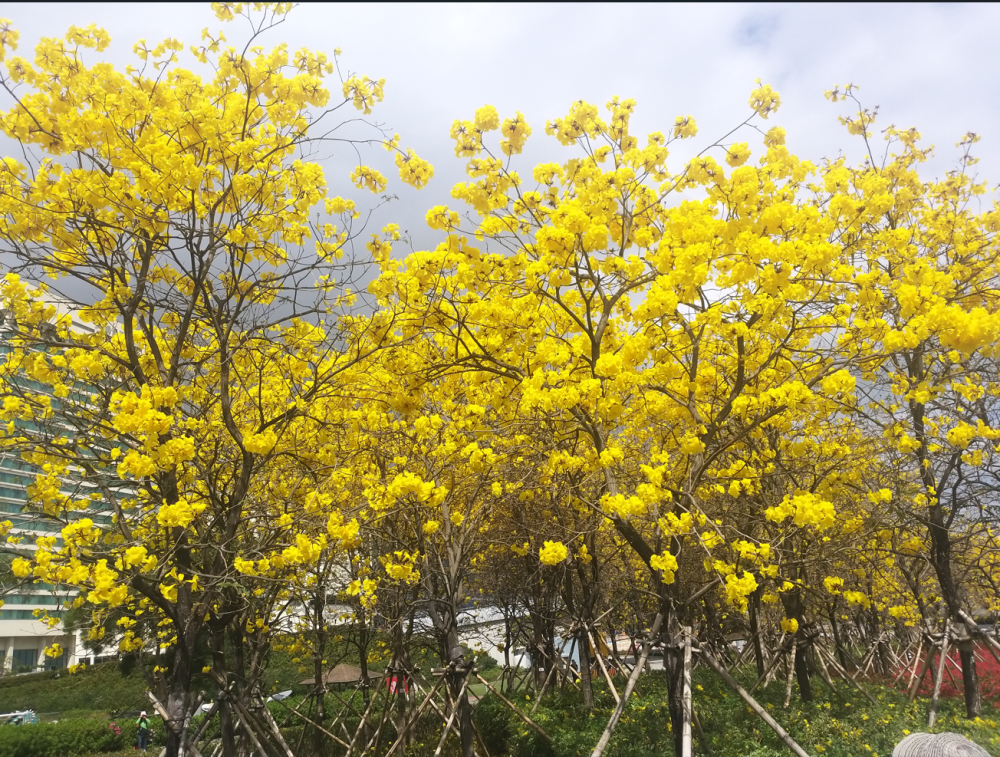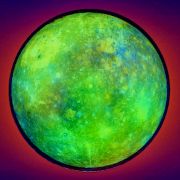All Activity
- Past hour
-
Churchcantor started following Symphony-Concerto in A Major For Electric Guitar and Orchestra
-
Symphony-Concerto In A Major For Electric Guitar And Orchestra-1 Free Sheet Music by Robert C. Fox for Various Instruments | Noteflight Symphony-Concerto In A Major For Electric Guitar And Orchestra-2 Free Sheet Music by Robert C. Fox for Various Instruments | Noteflight Symphony-Concerto In A Major For Electric Guitar And Orchestra-3 Free Sheet Music by Robert C. Fox for Various Instruments | Noteflight Symphony-Concerto In A Major For Electric Guitar And Orchestra-4 Free Sheet Music by Robert C. Fox for Various Instruments | Noteflight
-
Churchcantor started following Symphony-Concerto in A Major For Electric Guitar and Orchestra
-
Symphony-Concerto In A Major For Electric Guitar And Orchestra-1 Free Sheet Music by Robert C. Fox for Various Instruments | Noteflight Symphony-Concerto In A Major For Electric Guitar And Orchestra-2 Free Sheet Music by Robert C. Fox for Various Instruments | Noteflight Symphony-Concerto In A Major For Electric Guitar And Orchestra-3 Free Sheet Music by Robert C. Fox for Various Instruments | Noteflight Symphony-Concerto In A Major For Electric Guitar And Orchestra-4 Free Sheet Music by Robert C. Fox for Various Instruments | Noteflight
-
Churchcantor joined the community
-
PeterthePapercomPoser started following Microtonal Fugue in A
-
@Henry Ng Tsz Kiu and I brainstormed a little bit about what I could write next to give me a small diversion from my giant variations project. We decided that I could write another microtonal piece. I have written microtonal inventions before, so now I tried my hand at a microtonal fugue. It's a 4-voice fugue for string quartet and I tried to very scarcely use the microtones, only opting for occasional microtonal passing tones and sub-minor 3rds here and there. Nonethless, I think the piece retains a different microtonal flavor to it, but let me know what you think! I'd appreciate any observations, suggestions, critiques or comments! Thanks for listening!
- Today
-
chopin started following Violin Sonata in B-flat major, 2nd movement, Andante molto cantabile
-
The structure is very clean, and it piece was easy for me to follow with just one listen. This sounds very late classical, early romantic to me, and some of your harmony reminds me of Chopin, esp at around 2:10 (and of course the ending as you state). The motif of the Asian Koel is a nice touch, and merging that call with the main theme was neat. Like always your key changing helps keep the piece moving along, and you always find a way to add in a splash of the pentatonic. I get Beethoven and Chopin vibes throughout, but you clearly use your own voice and direction, especially with the bird motif.
-
This is the second movement of my Violin Sonata in B flat major, commissioned by and dedicated to Arjuna Clark @expert21. It's a slow movement marked "A scene by a stream", as suggested by my dedicatee Arjuna. I chase for simplcity here and I really wanna let the violin sing here, and I think I succeed. I freaking love the opening melody! The use of ARJUNA motive is more sparing as I have to give it away to the beautiful main melody! The melody was inspired when I was having a walk through the beautiful scene of Golden Trumpet Tree! The audio is again made by @Thatguy v2.0! Here is the pdf and YT video of the movement: Violin Sonata in B-flat major 2nd mov.pdf This movement is simple, only in ternary form. Here is the structure of the movement: 0:00 1st Part. The melody is quite beautiful for me, even though it sounds like the main melody in Chopin's Grande Polonaise Brillante, and in the same key, which I realized only after finishing this much later. The piano accompaniment represents the stream. In 1:02 Piano takes turn to play the main melody and violin the countermelody. 1:57 2nd part. I reached my usual contemplative mood in the middle section. Then I was awoken by the hummings of Asian Koel in 2:19. That bird is very common in HK which many people find their hummings disturbing but I actually love. 3:43 3rd Part. First begins a false recapitulation in wrong key G-flat major, then a real recap in tonic key in 4:21, with the main melody gets along with the Asian Koel motive. I personally really love the climax in 5:00! 5:13 Coda. A little coda reminds me the coda of Chopin's Nocturne in E flat major, op.9 no.2. Here is the 1st movement's post on YC: P.S. Here is the sound of Asian Koel: And here are some pictures I have taken that day: Hope you enjoy and feel free to comment! Henry
- Yesterday
-
PeterthePapercomPoser started following 3 movements from my new piece - Partita
-
mercurypickles started following 3 movements from my new piece - Partita
-
Hi all! These are the three inner movements of my new piano partita. There is also an introductory movement and a final, stylized gigue. I had some difficulties in exporting a MIDI rendering for those two movements, so they are not included here. There are strong thematic and sectional connections across each movement, so they do make a little less sense this way than they would in full context. Just bear that in mind while listening. I'd love any thoughts on the music, the piece is for a good friend of mine and I'd like to give it to them in tip-top shape! PARTITA 2-4.pdf
-
Thanks Henry! If nothing else, this exercise helped me get more familiar with the range of electronic sounds available in MuseScore.
-
String quartet #1 - 3rd and last movement
Marc Deflin replied to Marc Deflin's topic in Chamber Music
Thanks for reviewing @Henry Ng Tsz Kiu ! 🙂 Just because I like them and to create unity in the opus 🙂 Regards, Marc -
Hi @Alex Weidmann! I don't find this one silly at all. I don't think the second part can be detached from the first; the first part is sparser with simpler timbre and rhythm, which is then pushed to the climax in the middle section when all instruments appear, and then at the end there's more variety on timbre and rhythm. It's just one developmental process for me. Thx for sharing your work and nice try! Henry
-
Henry Ng Tsz Kiu started following Silly experiment
- Last week
-
Hi to all! Here's another silly experiment I tried with electronic music. I was trying to see if I could write something musical just by copying and pasting a simple motif into different synth types available on MuseScore, and offsetting the rhythms slightly. Think the second half works better than the first; but I'll let you decide.
-
Thanks, Henry! Yes, the beginning is a jazz minor scale (melodic minor ascending used for both the scale up and the scale down) with fourths raised for a bit of extra leading tone (leading tone to the fifth). And then we flip around a bit between Mixolydian and eventually a nice bright C Major. One of my bigger challenges with this piece was being sure that Whitman's lovely text would be heard through everything that is going on. It's a long and wordy text and I knew I wanted to work the "all flesh is as grass" in as well as a second idea. The text ends up similar in length to the "credo" section of the big masses, so it presents the same problem of how to fit it all in. I ended up doing a fair amount of homophonic writing in the early parts of the piece to keep the text clear and understandable and using the piano part to keep things lively, as well as having different voices come in and out to add emphasis to certain lines and keep things interesting. But by the second half, the singer may have a disorientingly fragmented experience, since I was often needing a voice part to switch back and forth from the poem to the biblical text in mid-thought to try and keep the lines from becoming too tangled with each other. To avoid some overlapping of people singing different texts simultaneously, I chopped the lines into little pieces and stitched them back together as a quilt to get the important words to punch through. Hopefully it's not too jarring an experience. The Catholic Church's Council on Trent (1545-1563) apparently specifically condemned this kind of polyphonic tomfoolery, feeling that interfering with the understandability of a text was missing the point of singing as a mode of communication. But of course, then what the heck do you do about the credo section of your choral mass to keep it from being boring and ten minutes long if you are composing for the church?
-
jurita joined the community
-
Hi Maggie! Yeah I love that rest bringing the lightness of the theme as well, which matches the waltz rhythm and light mood of the movement. Yeah I was just trying to be simple and might me a bit too simple here, but I thought reaching F minor (b.74) in a D major local key setting would be quite enough for a surprise! Yeah I hope I can play this in real life with Arjuna, so I'm definitely writing interactions between parts, otherwise I would be bored as freak! Henry
-
Hello @danishali903, thx for your review! Yeah maybe I can add a little bit more motion there, though originally I just wanna keep it simple for a shocking local tonic D major to modulate to G minor lol! Yeah it will work too, and I use quite some pizzicato in the next 3 movements! Thank you! I'm sure the piano writing is idiomatic because I plan to play with myself haha, so if it's not it would kill me! Henry
-
I have just watched Wes Anderson's The Phoenician Scheme today and I find the music really matches the film's eccentric style. The film quotes a lot of Stravinsky's Petrushka and Bach's famous Cantata BWV 147, as well as ending with the Firebird. The original music reminds a lot with Stravinsky as well, tho when the piano joins in it's more like Schonberg in a way with its tone and color, tho the rhythm and mood is still Stravinsky, or even in Riley's minimalism
-
Hi @Krisp! I like the opening D flat major passage which for me is very tranquilled. I don't know why, the ending of the piece reminds me of the ending of Schumann's Dichterliebe. Nice color and singing as usual! One thing is that, if you use key signatures maybe you can write less accidentals in your manuscript? Thx for sharing! Henry
-

Echoes of Flame - Concert Band
Henry Ng Tsz Kiu replied to NicholasG's topic in Orchestral and Large Ensemble
Hello @NicholasG! I think @Marius_ already got many good points and I'm not going to repeat what s/he said. You should be proud of it. Your orchestration and mood portrayal is very mature as a 16 year old and I like many of them. Your motivic usage is lovely too. I really like the ending starting from b.93, good preparation to it and nice rhythmic variety. Maybe for me you can also add more varieties in the harmony as well, since most of the passages are more diatonic and less modulatory and dissonance. Thx for sharing! Henry -

Jouskas (looking for feedback)
Henry Ng Tsz Kiu replied to Fruit hunter's topic in Orchestral and Large Ensemble
Hello @Fruit hunter! The mallets at the opening is a nice touch. Always like your percussion choice since you are a percussionist yourself. I think the whole music is energetic with some good contrast between those energetic passages, and very colorful. Thx for sharing! Henry- 1 reply
-
- 1
-

-

Paper Swan - Isen Lark - Cinematic Piano Solo
Henry Ng Tsz Kiu replied to Isen Lark's topic in Piano Music, Solo Keyboard
Hello @Isen Lark! Welcome to the forum! That's a soothing sad music reminds me of Richard Clayderman. It's lovely, maybe you can provide some contrast by modulating to a different key in the middle section out of G minor. But the whole music is enjoyable, nice ending as well! Would be great if you can also provide the score of your music. Thx for joining and sharing your music here! You can also visit other membets' posts and possibly leave reviews on them. Henry- 1 reply
-
- cinematic
- cinematic music
-
(and 1 more)
Tagged with:
-
Hi @pateceramics! The beginning is really dark with a dark key and dissonancnes. I like that in the first few pages the dissonances are still remained until the really bright C major section, and after that it's all God's glories. I also like how the four voices interact with imitations and call and response. Thx for sharing! Henry
-

What Is Your Current Musical Project?
AngelCityOutlaw replied to AngelCityOutlaw's topic in Composers' Headquarters
Pop instrumentation can be quite literally anything, but is most commonly based around a "band" rhythm section. Drumkit, bass guitar, and usually some chordal instrument like a keyboard guitar. Drums are very simple in most pop tunes. The simple "four on the floor" pattern is in almost every song. Kick drum on beat 1 and 3, snare on 2 and 4. -

Fugue XI in F major for 3 voices
Luis Hernández replied to Wieland Handke's topic in Piano Music, Solo Keyboard
It sounds great. I think the theme is very original, and when that happens in a fugue, it's much easier to follow the developments. To my taste, but this is just my personal opinion, the tempo is perfect. Because when there are fugues with dense textures and the movement is very fast, I think you lose a little bit of that sense of knowing where things are going aurally. The layout of the video is great. And the score is very, very detailed (sometimes I think some things could be simplified), and that's a plus. -
Sounds good. But here are a few observations: In my opinion, there is little use of inverted chords. So much movement of the bass in root notes is very strict and not very melodious (it is not in keeping with the counterpoint style). There are some strange twists in some modulations. In measure 7 you have Bm - E.... and then Gm!! It's true that Gm - C - modulates to F. But that jump from E to Gm is harsh in this context. Something similar happens in bar 11: F - Em(b5) -- F# (b5) - B... to go to Em. These are progressions that appear with sudden changes and make it sound very strange. I'm not saying that this can't be written, but in this absolutely tonal context, I think it's out of style. If you do this in a contemporary language, it could work.
-
Excellent! I love the way your ARJUNA theme skips along rhythmically in the violin part; the whole piece has such a lighthearted feel to it. I would have liked a little more bold variety to the repeated wind blows fair, wind blows cold theme that we see in the violin at measure 62, since it comes up several times. It feels like you could have pushed the harmonic surprise there a little more in those places, but I know you said you were also trying to simplify your ideas in this piece. Excellent job keeping both parts varied for interest and letting them interact with each other in diverse ways that will let the musicians enjoy bouncing off each other's musical ideas. This seems very fun to play! I hope you'll enjoy it!

.thumb.png.8b5b433a341551e913a34392660bc95b.png)





